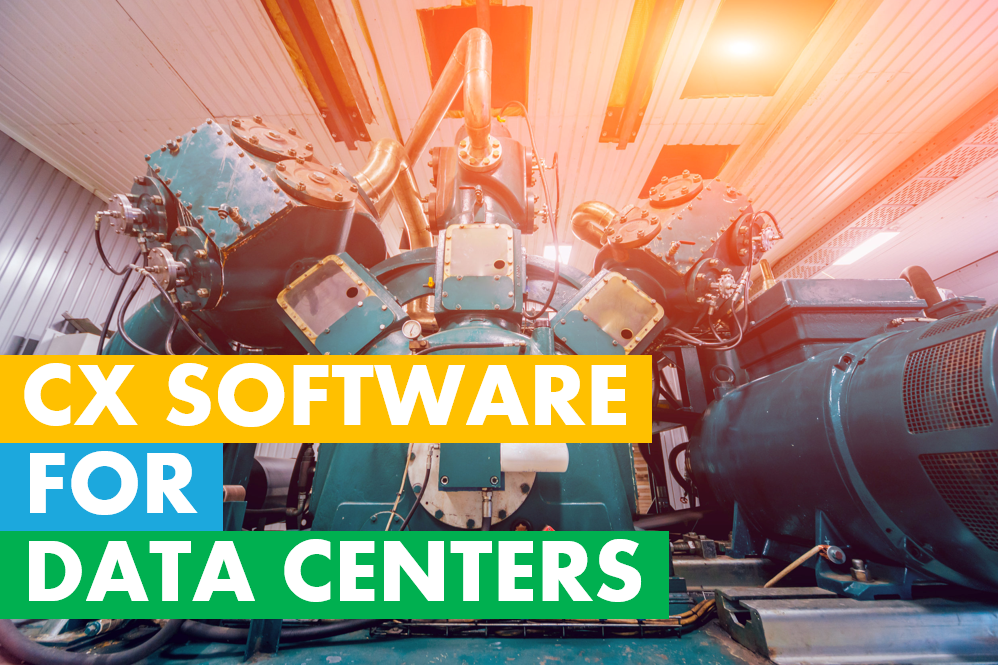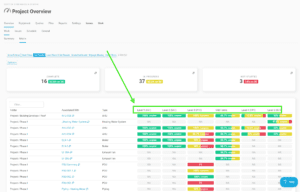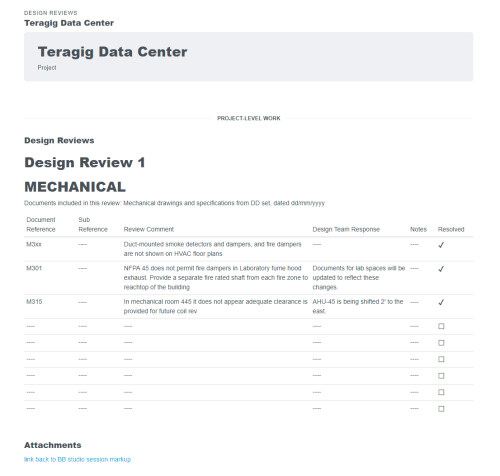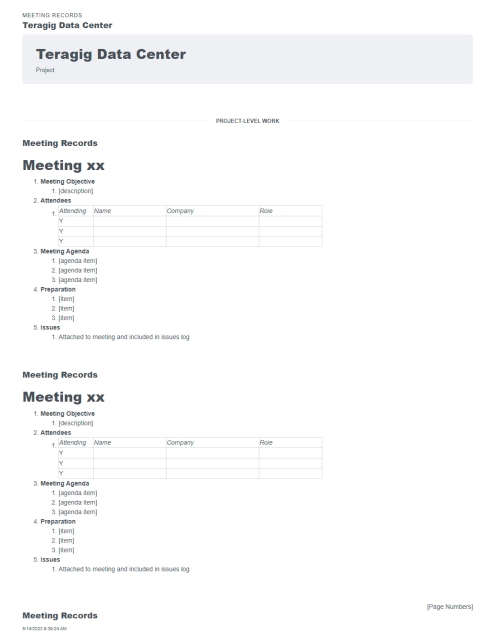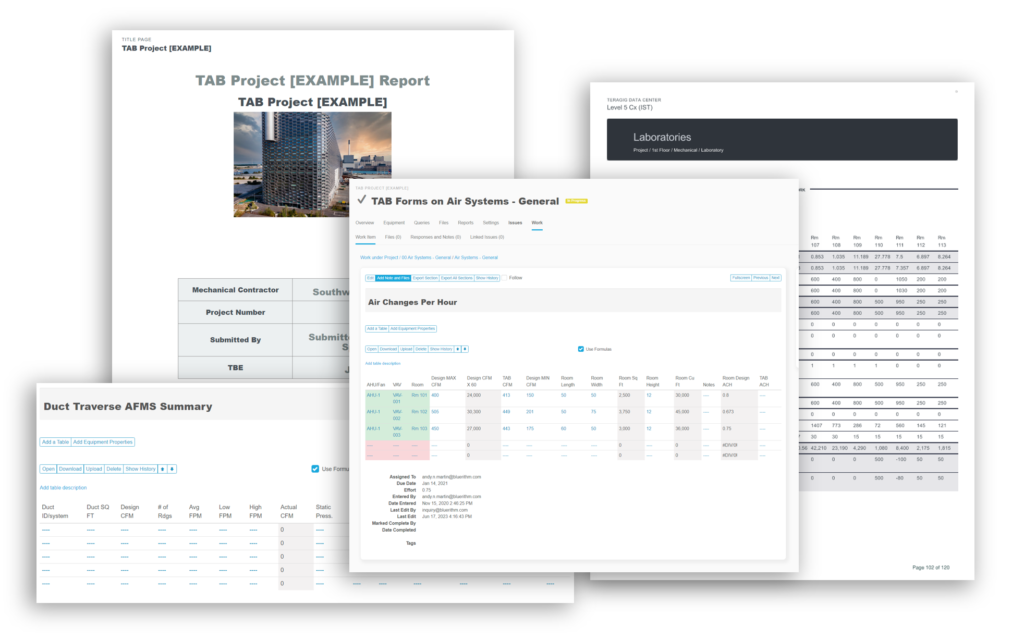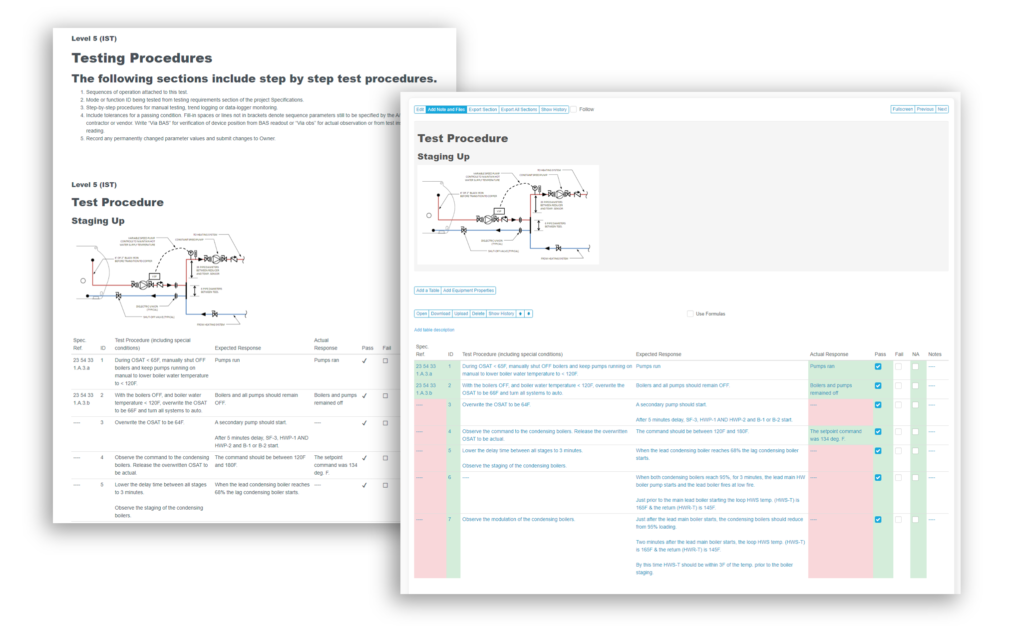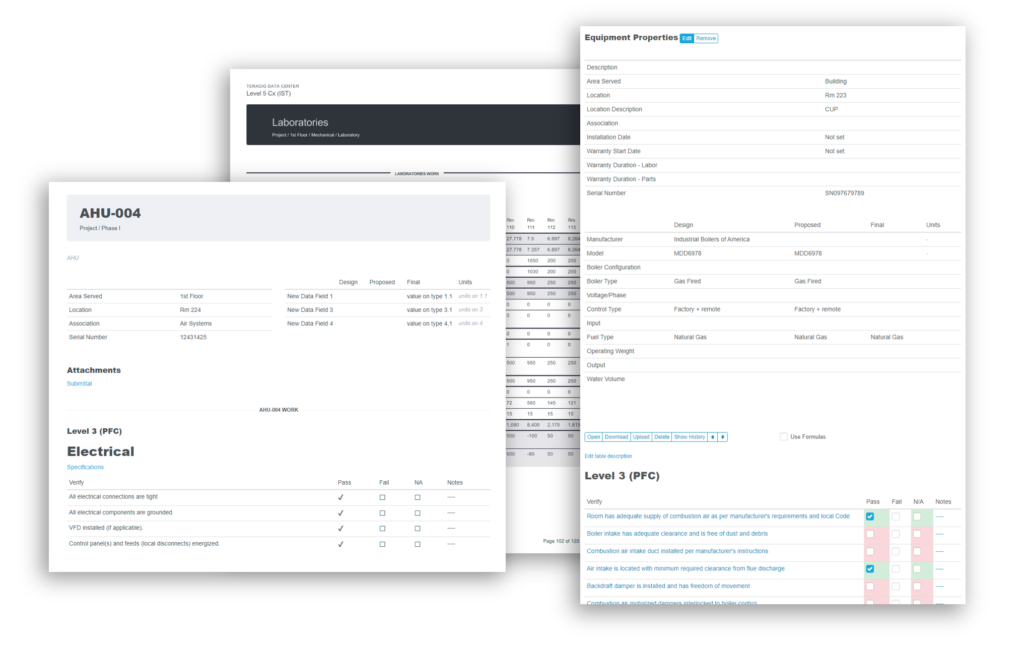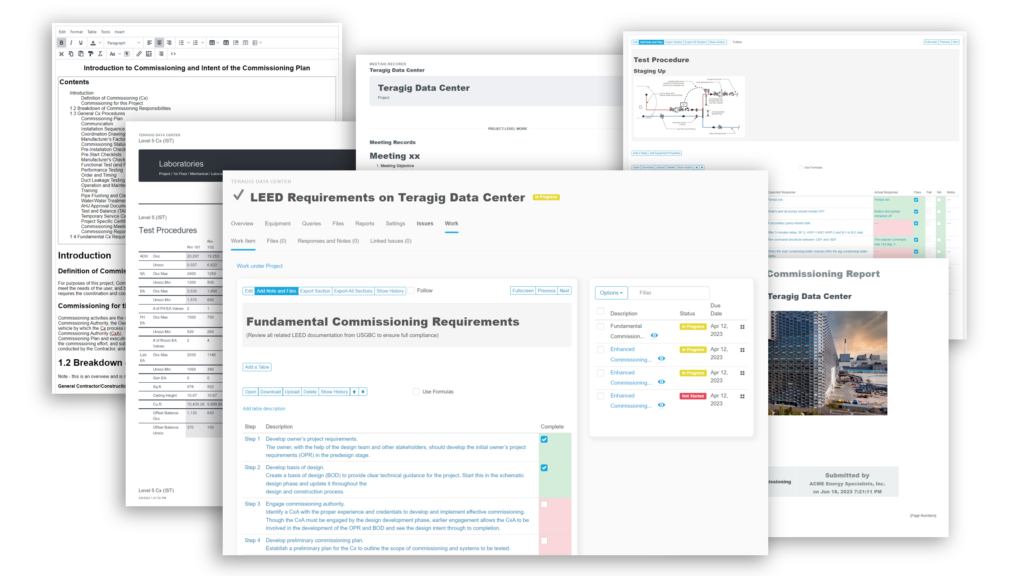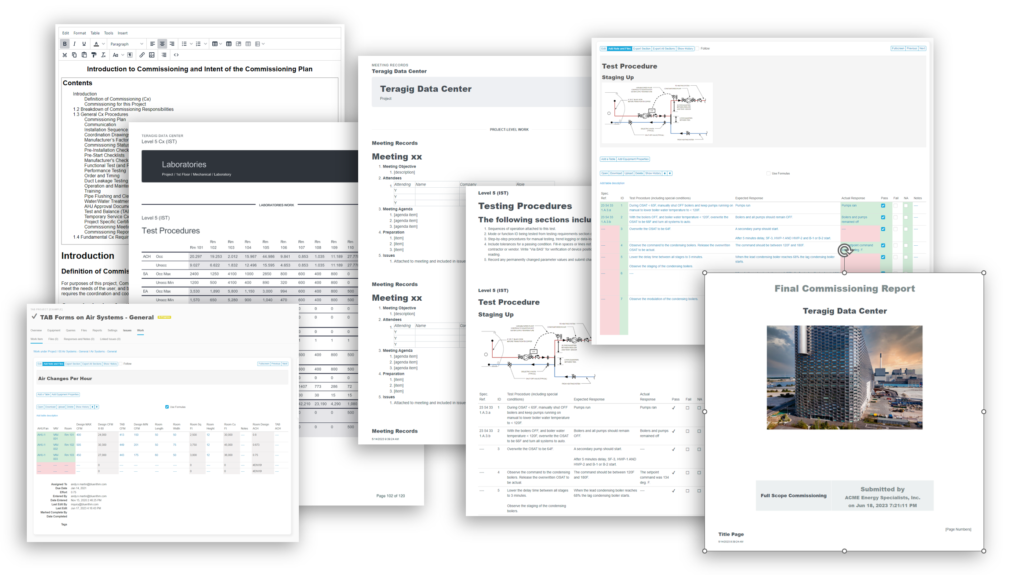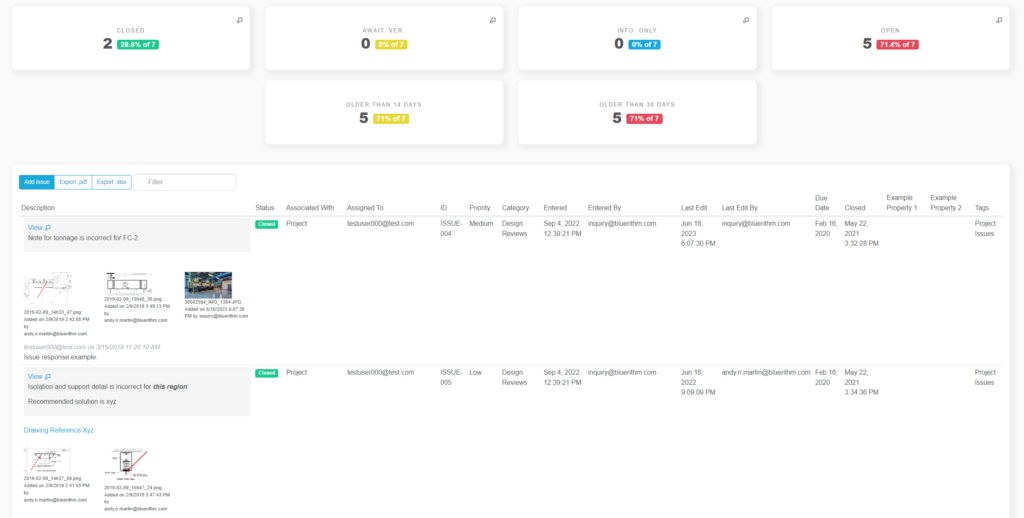You might ask yourself, “why should we use Cx software to digitalize our data center commissioning project?” However, doesn’t it seem ironic that you wouldn’t use a powerful software platform like Bluerithm for your data center Cx? We’ll explain why we think it is.
Data centers are facilities filled with networked computers, storage systems, and computing infrastructure businesses use to organize, process, store, and disseminate large amounts of data. Additionally, enterprise-level data centers include the capacity to secure and protect cloud computing resources and in-house and on-site resources.
From a societal or cultural-anthropological perspective, data centers are a technological advancement representing a transformative and irreversible shift in human activity (barring catastrophe). The irreversibility is due to a complete planetary reorganization of how things get done.
The very existence of data centers is proof that our economies, communications, processing capacities, and information repositories no longer exist on the same scale or plane as the majority of human history. Data centers don’t represent the inevitably of change – but rather our reliability on changes that have already happened.
So – isn’t it ironic (like the old Alanis Morissette song) that many Cx professionals today are still at the stage of pitching old-school, paper-based commissioning as a benefit to data center commissioning? Rather than pitching the use of Cx software platforms, like Bluerithm, to provide digital turnovers? The irony of this notion is jaw-dropping if you take a minute to think about it.
For example, imagine you’re conducting a high-level email marketing campaign targeting C-suite executives across the globe. Your goal is to introduce them to your firm’s commissioning services. Your lead generation tool of choice is LinkedIn.
Work through the communication steps and imagine you’re ready to initiate contact. Would you use hand-written notes mailed through the US postal service to reach out to those leads generated through your LinkedIn account?
Of course not! You’d use the best tools and technology available to contact your leads. Why? There are two reasons.
- It’s the most efficient and effective way to work in our day and age.
- You want to present yourself and your company at the forefront of B2B interactions.
So why isn’t this thinking reflected with Cx professionals and data center commissioning projects? Do you see the irony?
The Unique Needs of Data Center Cx
There is no doubt data centers present unique needs for construction management. Designing, constructing, and managing data centers are immensely complex. Data centers are typically industrial-scale facilities that can require the energy of a small town. And their requirements are more rigorous than what’s usually deployed on commissioning projects.
When resources go down in a data center, the consequences can be disastrous. The value of the equipment itself is astronomical. But it’s nothing compared to the financially-related processes relying on that equipment – international in scope and staggering in potential impact. Simply put, data centers are a special breed and demand expert-level, critically focused attention at every phase, level, and step of their commissioning.
So, are there any requirements particular to data centers that constitute sufficient reasons not to deploy the most efficient and effective Cx experience available?
The ROI and added value of deploying platforms like Bluerithm on new building construction are indisputable. Commissioning providers and contractors have been wielding Cx technology for years. The increased efficiency and a decrease in time-to-turnover and costs have created greater demand from building owners for fully digital turnovers.
Therefore, we’re not looking to make the case in this article that data centers need commissioning. We believe that’s a foregone conclusion. And we’re not making a case for using Bluerithm on standard new building construction projects – which we also consider a Cx best practice.
Instead, we’re wondering if there is anything particular about data center projects that would require old-school commissioning. And we’re pointing this out because it’s ironic that such a technology-driven facility would use anything other than the best technology available.
So let’s take a closer look at some of the unique considerations in data center Cx to see if Cx software platform benefits extend to data centers or exclude them.
Power
Data centers need to maintain an uninterrupted supply of power. So it’s no wonder that power represents the highest operational cost. Power systems need to be highly resilient and redundant – backups on backups.
Keeping these systems and equipment monitored, tested, balanced, and maintained needs to happen in real-time.
Would Cx with a high-touch, paper-based communications, and tracking system work better? Or is a cloud-based, real-time communications and data aggregation platform better?
Cooling
This is another mission-critical function of data center facilities. Computing resources generate massive amounts of heat. These resources need to be cooled constantly. On top of this, the climate must be maintained as most resources require cooling and optimized temperature control. Again, we need lots of redundancy and backups.
So, would it be better to monitor, test, balance, and maintain these systems using long reporting chains, excel spreadsheets, and checklists? Or a cloud-based software platform that uses real-time visibility with integrated dashboard views that give direct insight into project status, reporting, and operations?
Control Systems
Automation and control systems are at the heart of data center performance. These enable and facilitate a unified operation that brings together equipment and systems, environmental conditions, and operators, allowing them to interact and respond to their respective events and actions.
Control systems must be carefully coordinated as various engineering disciplines and construction trades work together. You can get a more detailed picture of the components that require attention here: Data Center Commissioning.
Complexity. Interactivity. Data aggregation. Monitoring. Testing. Interface visibility.
In a sense, it’s the same story as power and cooling. There’s no way that deploying a Cx software platform isn’t the better option. Using a platform that offers real-time communication, cloud-based documentation, a one-place dashboard interface, hub-style data aggregations from other platforms, and immediate project visibility for stakeholders, reporting, and auditing is without question the right choice.
The alternative is reams of paper reports, waiting on siloed communication chains, digging through emails, and disjointed documentation storage.
Location & Physical Security.
While the location is an essential consideration for data centers, the requirements related to commissioning are less relevant. Data centers must consider whether or not their systems’ performance will be affected by the environment. We’re talking about the weather, geological conditions, overall climate, flight paths, utility reliability, political stability, and the like.
The same goes with physical security, as data center access is heavily controlled and only limited to qualified and authorized personnel.
There’s a lot on the line inside a data center, which demands that all aspects of their construction and ongoing operations use levels of tech that match their scale and scope. There isn’t anything about a data center that indicates the outdated paper method remains a standard for their Cx process. In fact, it’s just the opposite.
True Data Center Cx
We’ve detailed the case for commissioning with a Cx software platform in previous articles. In addition, we’ve discussed Bluerithm’s impact on best practices, productivity standards in the construction industry, LEED Certification, and fully digital turnovers.
The Cx process is transforming, and industry stakeholders are demanding it. Society’s technological evolution has made it all but inevitable. The message in this article isn’t any different, but the opportunity to point out what seems entirely evident can’t be overlooked.
Why would you commission a data center without deploying the best technological practices, including a Cx software platform that maximizes the efficiency and effectiveness of the Cx process?
We’d like to say you wouldn’t – but unfortunately, the industry is still playing catch up. So, we’ll keep saying you shouldn’t while we continue to show you the best Bluerithm has to offer – until everyone else figures it out.

